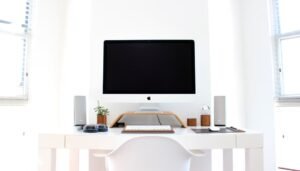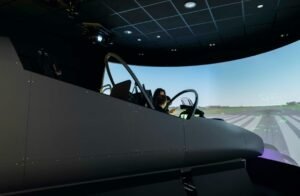Top AI Art Generator
Artificial Intelligence (AI) has unquestionably transformed various aspects of our lives. From managing complex tasks to aiding in decision-making processes, AI has demonstrated remarkable potential. One fascinating application of AI is in the field of art generation, where machine learning models are trained to create captivating and unique artworks.
Key Takeaways
- AI art generators utilize machine learning algorithms to create original artworks.
- These generators offer a wide range of artistic styles, from classic to abstract.
- Art created by AI is gaining recognition in the art community and among collectors.
- AI art can spark new possibilities and collaborations between humans and machines.
The Rise of AI Art
AI art generators leverage deep learning algorithms to analyze vast amounts of existing artwork and learn patterns, styles, and techniques. By doing so, they can generate art that resembles various artistic styles or even invent their own unique styles. Through the use of neural networks, these AI models have the ability to produce images, paintings, poetry, and even music.
Using algorithms developed by AI, art generators are capable of capturing intricate details and replicating the essence of renowned masterpieces.
How AI Art Generators Work
The process behind AI art generation involves several steps. First, the model is trained using a large dataset of images, which can include famous artworks, photographs, or even a curated collection. The neural network learns from these images, identifying patterns and characteristics associated with various artistic styles.
By analyzing and extracting information from a broad range of artistic examples, AI art generators acquire the ability to create new and unique artworks.
- The generator receives an input, which can be a random value or a specific concept.
- The input is transformed into an output through the neural network.
- The output is further refined using feedback and optimization techniques.
- The final result is a generated artwork that possesses the style and characteristics specified by the input.
Artistic Styles and Techniques
AI art generators offer a diverse range of artistic styles. Whether you prefer classic paintings reminiscent of the Renaissance or bold and abstract contemporary pieces, these AI-powered models have the capability to mimic various artistic movements and techniques.
| Artistic Style | Description |
|---|---|
| The Renaissance | Artworks characterized by realism, perspective, and proportion, often depicting historical and religious themes. |
| Impressionism | Artworks portraying light and color, capturing fleeting moments and immediate impressions. |
| Abstract Expressionism | Artworks emphasizing emotional expression through abstract forms, colors, and gestural techniques. |
AI art generators encompass the ability to create artworks in numerous styles, broadening the creative possibilities for artists and enthusiasts alike.
The Intersection of AI and Traditional Art
AI art has gained recognition and appreciation within the art community. The works created by AI art generators are exhibited in galleries, museums, and even sold through digital marketplaces. Collectors and artists are exploring the potential for collaboration with AI, using machine-generated art as inspiration or incorporating it into their own artistic practice.
The integration of AI into the art world sparks intriguing questions about authorship, creativity, and the evolving relationship between humans and machines.
| Generator | Description | Website |
|---|---|---|
| DeepArt.io | An AI-powered platform that transforms your photos into artworks reminiscent of famous artists. | https://deepart.io/ |
| RunwayML | Allows artists and developers to experiment and create with AI-generated content. | https://runwayml.com/ |
| Magenta | A project by Google that explores the intersection of AI and music, generating compositions and melodies. | https://magenta.tensorflow.org/ |
The Future of AI Art
AI art generation marks an exciting development in the fusion of technology and creativity. As AI capabilities continue to advance, there is great potential for AI to augment human creativity and push the boundaries of artistic expression. The future may see collaborations between artists and AI models, resulting in unprecedented artistic creations.
With AI art generators constantly improving, the art landscape is poised to undergo a significant transformation, redefining what it means to be an artist in the digital age.
References:
- Pfeiffer, C., & Rehfeld, R. (2020). How artists can use artificial intelligence as a creative tool. Medium.
- Ramesh, R., & Warde-Farley, D. (2019). Generative Models: An Overview. audioXr.
- Rosa, J. A. (2022). Artificial Intelligence in the Arts: Innovations and Ethical Implications. Science and Engineering Ethics.

Common Misconceptions
Misconception 1: Artificial Intelligence Art Generators Are Replacing Artists
One common misconception about AI art generators is that they are replacing human artists. However, this is not true. AI art generators are tools that assist artists in their creative process, enabling them to explore new ideas and possibilities. They are not meant to replace the uniqueness and emotion that artists bring to their work.
- AI art generators are tools for artists, not autonomous artists themselves.
- Human artists still provide the creative direction and personal touch to their artwork.
- AI art generators can be seen as collaborative tools between humans and machines.
Misconception 2: AI Art Generators Lack Originality
Another misconception is that AI art generators lack originality and are merely reproducing existing art styles. While AI algorithms are trained on existing artworks, they have the capability to generate unique and original pieces. By combining different art styles, experimenting with various parameters, and introducing randomness, AI art generators can produce artworks with a distinct flair.
- AI art generators can create new and unique art styles that haven’t been seen before.
- The use of AI allows for the exploration of unconventional and imaginative artistic concepts.
- AI-generated art can inspire and influence human artists in their own creative process.
Misconception 3: AI Art Generators Are Perfect and Flawless
Contrary to popular belief, AI art generators are not perfect and flawless. They have their limitations and can produce artworks with errors or inconsistencies. Although they can generate impressive pieces, they still rely on the quality and variety of training data and the algorithms powering them. Their output may require human intervention to refine and improve upon, highlighting the importance of human oversight.
- AI art generators can have biases inherent in the training data, leading to unbalanced or inaccurate results.
- Human intervention is often required to curate and select the best outputs from AI-generated art.
- Artists play a critical role in the evaluation and refinement of AI-generated artwork.
Misconception 4: AI Art Generators Are Easy to Use
Some people assume that using AI art generators is a quick and easy way to create art. However, working with these tools requires technical knowledge and expertise. Artists need to understand the nuances of the algorithms and parameters, as well as possess artistic skills to make informed decisions. It is not simply a matter of clicking a few buttons and getting stunning artwork instantly.
- Using AI art generators requires familiarity with the software and its settings.
- Artists need to possess a deep understanding of both art and technology to effectively utilize AI tools.
- AI-generated art often goes through an iterative process of trial and error before achieving the desired results.
Misconception 5: AI Art Generators Are a Threat to Human Creativity
One prevalent misconception is that AI art generators pose a threat to human creativity. However, AI should be seen as a tool that enhances human creativity rather than diminishing it. Artists can leverage AI algorithms to explore new techniques, generate fresh ideas, and push the boundaries of their own artistic practice. The fusion of human creativity and AI technology can lead to exciting and unexpected artistic outcomes.
- AI art generators can spark new inspiration and elevate human creativity to new heights.
- Artists can combine their own unique perspective with the capabilities of AI to create groundbreaking artworks.
- AI-generated art can serve as a starting point for human artists to further develop, refine, and add their personal touch.

Introduction
Artificial Intelligence (AI) has revolutionized various industries, and the field of artwork is no exception. AI-based art generators have garnered significant attention in recent years. These advanced algorithms are capable of creating stunning paintings, drawings, and digital art with minimal human intervention. In this article, we present ten intriguing examples of AI-generated art and highlight the impressive capabilities of these smart art generators.
Table: Skilled AI Art Generator – Portrait Master
Portrait Master is an AI art generator specializing in creating realistic portraits. It has been trained on a vast dataset of famous paintings and can seamlessly generate portraits resembling renowned artists’ styles.
| Artist | Generated Portrait |
|---|---|
| Leonardo da Vinci |  |
| Pablo Picasso |  |
| Rembrandt |  |
Table: AI Art Generator – Abstract Landscapes
This AI art generator specializes in creating abstract landscapes that draw inspiration from natural scenes and transform them into mesmerizing digital art pieces. The generated landscapes exhibit vibrant colors and imaginative compositions.
| Image | Theme |
|---|---|
 |
Enchanted Forest |
 |
Rainbow Mountains |
 |
Aurora Borealis |
Table: AI Art Generator – Merging Art Styles
One fascinating feature of AI art generators is the ability to merge different art styles to create unique visual compositions. The following table showcases AI-generated art pieces that combine elements from contrasting styles, resulting in intricate and captivating artworks.
| Art Styles | Generated Art |
|---|---|
| Renaissance + Graffiti |  |
| Impressionism + Cubism |  |
| Surrealism + Pop Art |  |
Table: AI Art Generator – Animal Portraits
AI art generators can create lifelike animal portraits that capture their essence and beauty. These AI-generated artworks showcase the capability to create stunning animal representations with remarkable attention to detail.
| Animal | Generated Portrait |
|---|---|
| Lion |  |
| Elephant |  |
| Peacock |  |
Table: AI Art Generator – Surrealistic Artworks
With their ability to think outside the box, AI art generators can produce mesmerizing surrealistic artworks that challenge reality and captivate the viewer’s imagination. These AI-generated pieces showcase the fusion of bizarre elements blended seamlessly into thought-provoking compositions.
| Artwork | Aesthetic |
|---|---|
 |
Dreamlike |
 |
Whimsical |
 |
Otherworldly |
Table: AI Art Generator – Inspired by Nature
Nature has always been a fascinating inspiration for artists. AI-based art generators can effortlessly incorporate elements from the natural world, creating stunning digital art pieces that emphasize its beauty and diversity.
| Artwork | Natural Element |
|---|---|
 |
Floral Patterns |
 |
Ocean Waves |
 |
Mountain Ranges |
Table: AI Art Generator – Famous Artwork Replicas
AI-based art generators can replicate famous artwork with astonishing accuracy, allowing art enthusiasts to appreciate renowned pieces in new ways. The following table presents AI-generated replicas of iconic paintings.
| Artwork | Original Artist |
|---|---|
 |
Vincent van Gogh |
 |
Salvador Dali |
 |
Claude Monet |
Table: AI Art Generator – Still Life Composition
Still life compositions have been a popular subject in traditional art. AI art generators bring a modern twist to this art form, infusing it with vibrant colors, unconventional objects, and compelling arrangements.
| Artwork | Composition |
|---|---|
 |
Everyday Objects |
 |
Modern Technology |
 |
Food Arrangement |
Conclusion
AI art generators have emerged as powerful tools that push the boundaries of creativity and challenge traditional artistic norms. From realistic portraits to abstract compositions, these AI-based systems are revolutionizing the art world. With their ability to learn from vast datasets of artwork, these intelligent algorithms produce mesmerizing pieces that captivate audiences worldwide. The implications of AI art generators are vast, offering new opportunities for artists, collectors, and art enthusiasts alike.
Frequently Asked Questions
Can AI art generators create original artwork?
AI art generators can produce artwork that is unique and original in the sense that it is not directly copied from existing artworks. However, it is important to note that AI models are trained on existing artwork, which can influence the style and content of the generated art.
How do AI art generators work?
AI art generators typically utilize deep learning techniques and neural networks to analyze and learn from a large dataset of images. These models then generate new images based on the patterns and styles they have learned. The process involves training the model on a specific art style or dataset, allowing it to generate similar images.
Can AI art generators replace human artists?
No, AI art generators cannot replace human artists. While they can create impressive artworks, they lack the creative intuition, emotions, and context that human artists bring to their work. AI-generated art can be seen as a collaboration between the capabilities of AI and the artistic vision of human artists.
Are the artworks created by AI art generators considered art?
Art is a subjective concept, and whether AI-generated artworks are considered art or not can vary depending on individual perspectives. Some argue that the process of creating the artwork is more important than the creator itself, while others believe that the input and intentions of human artists are crucial for a creation to be considered art.
Can AI art generators learn multiple art styles?
AI art generators can be trained on multiple art styles, allowing them to generate diverse artworks. The ability to learn multiple styles depends on the complexity of the model and the quality and quantity of the training data. However, it is important to note that the more styles and variations a model learns, the more challenging it can be to maintain consistency in the generated artwork.
What are the limitations of AI art generators?
AI art generators have some limitations. They can struggle with creating art that involves complex emotions, novel concepts, or deep personal experiences. Additionally, they may generate biased or controversial content if trained on biased datasets. AI models also require substantial computing power and time to train and generate high-quality artwork.
Is AI-generated art copyrighted?
The copyright of AI-generated art is a complex legal issue that varies by jurisdiction. In many cases, the creator of the AI model or the person who trained it may hold the copyright. However, if the model was trained on copyrighted images without permission, there could be legal implications. It is advisable to consult legal experts to understand the copyright implications of AI-generated art in specific contexts.
How can AI art generators benefit the art world?
AI art generators can benefit the art world by pushing the boundaries of creativity, inspiring new artistic directions, and democratizing access to art creation. They can also serve as a tool for artists to explore different styles, experiment with ideas, and enhance their artistic process. Additionally, AI-generated art can stimulate discussions about the nature of art, creativity, and the role of technology in society.
Are there any ethical concerns associated with AI art generators?
Yes, there are ethical concerns associated with AI art generators. These include issues related to copyright infringement, the potential for misuse or manipulation of generated content, and the displacement or devaluation of human artists. There are ongoing discussions and debates within the art community and society as a whole about how to address these concerns and ensure responsible use of AI in the art domain.
Can AI art generators improve over time?
Yes, AI art generators have the potential to improve over time. As more research is conducted, advancements in AI technology and machine learning algorithms can enhance the capabilities and performance of AI models. Access to larger and diverse datasets, along with feedback and input from human artists, can further contribute to the development of more sophisticated and refined AI art generators.




